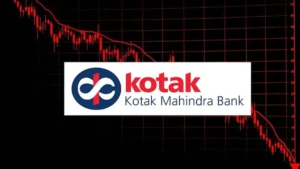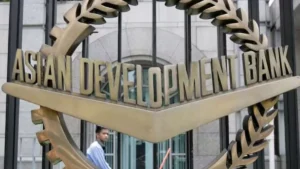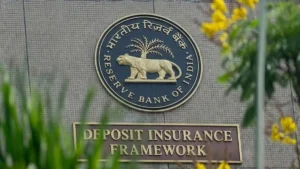The central government has reconstituted the Monetary Policy Committee (MPC) ahead of the Reserve Bank of India (RBI) monetary policy review scheduled for October 7-9. This decision comes as part of the RBI’s mandate to maintain consumer price index (CPI) inflation within a target range of 2-6% and aims to stabilize inflation at 4% on a durable basis. The newly appointed external members are Ram Singh from the Delhi School of Economics, Saugata Bhattacharya, and Nagesh Kumar, each serving a four-year term. The MPC also includes RBI officials, with the RBI Governor serving as the chairperson.
Background and Context
The MPC has been pivotal since its first formation on September 29, 2016, following amendments to the RBI Act in 2016, which established the committee’s role in setting the benchmark interest rate. Previously, the committee faced dissenting views from some members regarding monetary policy decisions, notably during the August review when the repo rate was left unchanged at 6.5% for the ninth consecutive time due to high food inflation concerns.
Recent Appointments
The new members bring diverse expertise:
- Ram Singh holds a PhD in economics from Jawaharlal Nehru University and has a postdoctoral fellowship from Harvard.
- Saugata Bhattacharya is an economist with extensive experience in financial markets, having previously served as Chief Economist at Axis Bank.
- Nagesh Kumar, with a PhD from the Delhi School of Economics, has experience in international economic organizations, including the UNESCAP.
Implications for Monetary Policy
The reconstitution may influence future policy stances, especially in light of the committee’s previous disagreements. The upcoming review on October 9 is expected to maintain the repo rate at 6.5% amid ongoing inflationary pressures, highlighting the importance of the MPC in shaping India’s economic landscape.
Overview of the RBI Act, 1934
The Reserve Bank of India (RBI) was established under the RBI Act of 1934, which laid the legal foundation for its operations, starting on April 1, 1935. Originally headquartered in Kolkata, the RBI’s central office was permanently moved to Mumbai in 1937. The Act aimed to provide a structured framework for overseeing banking firms in India, transitioning the RBI from a shareholders’ bank to a nationalized entity in 1949.
Key Objectives
The RBI Act, 1934, outlines the following primary objectives for the Reserve Bank:
- Regulation of banknotes and currency issuance.
- Management of the currency and credit system for national benefit.
- Maintenance of monetary stability through adequate reserves.
Key Functions
The RBI’s main functions include:
- Issuing banknotes and overseeing their design, form, and material, with approval from the central government.
- Handling the exchange of torn or disfigured banknotes, though this is a discretionary function, not a right.
- Managing the legal tender status of currency, as outlined in the Act.
Scheduled Banks
The Act defines scheduled banks as those included in the Second Schedule, requiring a minimum capital of ₹5 lakhs. This category includes scheduled commercial and cooperative banks.
Important Sections
Several key sections of the RBI Act are critical for understanding its operations:
- Section 3: Establishment of the Reserve Bank.
- Section 21A: Government transactions facilitated by the RBI.
- Section 26(2): Withdrawal of legal tender notes.
- Section 24: Demonetization of notes.
- Section 27: Re-issuance of notes.
- Section 45(u): Definitions of repo, reserve, and money market instruments.
Here is a concise table with the key points relevant for exams:
| Key Points | Details |
|---|---|
| Why in News | The government reconstituted the Monetary Policy Committee (MPC) ahead of RBI’s monetary policy review scheduled for October 7-9. |
| MPC Reconstitution | The newly appointed external members are Ram Singh, Saugata Bhattacharya, and Nagesh Kumar. |
| MPC’s Role | Responsible for setting benchmark interest rates and managing inflation (CPI target range of 2-6%). |
| RBI Act, 1934 | Established the Reserve Bank of India, which began operations on April 1, 1935. |
| Key Appointments | – Ram Singh: PhD in economics, postdoctoral fellowship from Harvard. – Saugata Bhattacharya: Former Chief Economist at Axis Bank. – Nagesh Kumar: PhD, experience in international organizations. |
| RBI Objectives (RBI Act, 1934) | – Regulation of banknotes and currency issuance. – Management of currency and credit system. – Maintenance of monetary stability. |
| Key Functions of RBI | – Issuing banknotes. – Handling exchange of torn or disfigured banknotes. – Managing legal tender status of currency. |
| Scheduled Banks Definition | Banks with a minimum capital of ₹5 lakhs, including scheduled commercial and cooperative banks. |
| Important Sections of RBI Act | – Section 3: Establishment of RBI. – Section 21A: Government transactions. – Section 26(2): Withdrawal of legal tender notes. – Section 24: Demonetization. – Section 45(u): Definitions of repo and money market instruments. |




 RBI Slaps ₹62 Lakh Penalty on Kotak Mahi...
RBI Slaps ₹62 Lakh Penalty on Kotak Mahi...
 ADB commits $4.26 billion in sovereign l...
ADB commits $4.26 billion in sovereign l...
 RBI Board Sanctions Overhaul of Deposit ...
RBI Board Sanctions Overhaul of Deposit ...







